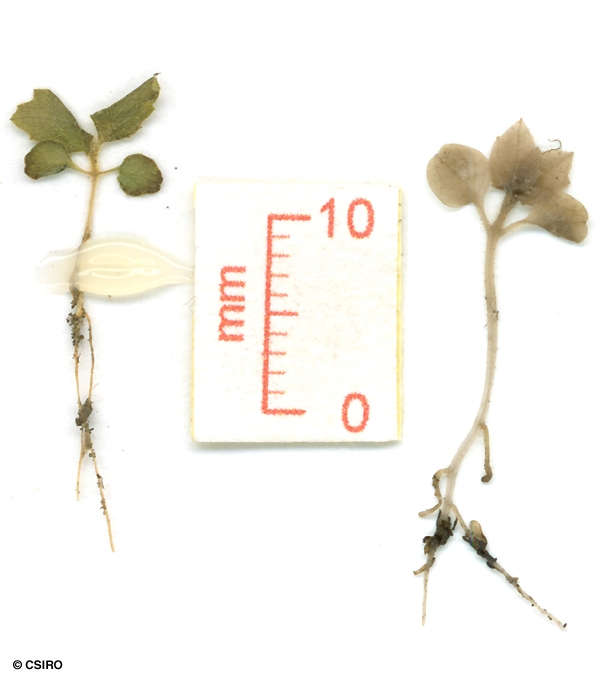Australian Tropical Rainforest Plants - Online edition
Callicarpa pedunculata R.Br.






Brown, R. (1810) Prodromus Florae Novae Hollandiae : 513. Type: Northern Australia, 1805-05, R. Brown s.n. (J. J. Bennett); lecto: BM; iso: E, K, MEL, NSW. Fide Munir (1982).
Callicarpa; Velvet Leaf
Usually flowers and fruits as a shrub about 1-4 m tall.
Twigs, petioles and the underside of the leaf blade clothed in stalked stellate hairs, upper surface of the leaf blade clothed in stellate and simple hairs when young becoming sparser when older. Leaf blades about 6-18 x 3-6 cm. Small, pale yellow, globular or circular glands visible with a lens on the underside of the leaf blade. Basal part of the leaf blade with smooth margins but the remainder toothed.
Primary peduncles longer than the petioles. Calyx about 1-1.5 x 1 mm, cup-shaped, minutely 4-toothed, glandular and stellate hairy on the outer surface. Corolla glabrous, about 2-3 mm long, lobes about 1 mm long, tube about 1.5-2 mm long. Anthers glandular along the connective. Ovary globular, glabrous, glandular particularly towards the apex. Style glabrous, about 5-8 mm long.
Fruit globular, glandular, particularly towards the top, about 2-4 mm diam. Calyx lobes persistent at the base. Infructescence branches and calyx clothed in stellate hairs. Seeds enclosed in a hard endocarp. Cotyledons almost as wide as the radicle or slightly wider.
Cotyledons ovate to orbicular, about 2-3 mm diam., petiole about 1 mm long. First pair of leaves opposite, margins toothed. At the tenth leaf stage: stem, petiole and underside of the leaf blade clothed in stellate hairs, upper leaf blade surface clothed mainly in simple hairs. Circular or globular yellow glands visible with a lens on the underside of the leaf blade. Seed germination time 24 to 131 days.
Occurs in CYP, NEQ, CEQ and southwards as far as north-eastern New South Wales. Altitudinal range in CYP and NEQ from near sea level to 1150 m. Grows in disturbed areas in rain forest and wet sclerophyll forest. Also occurs in Asia and Malesia.
Suspected, on field evidence, of being toxic to cattle but the evidence was not conclusive. Everist (1974).





